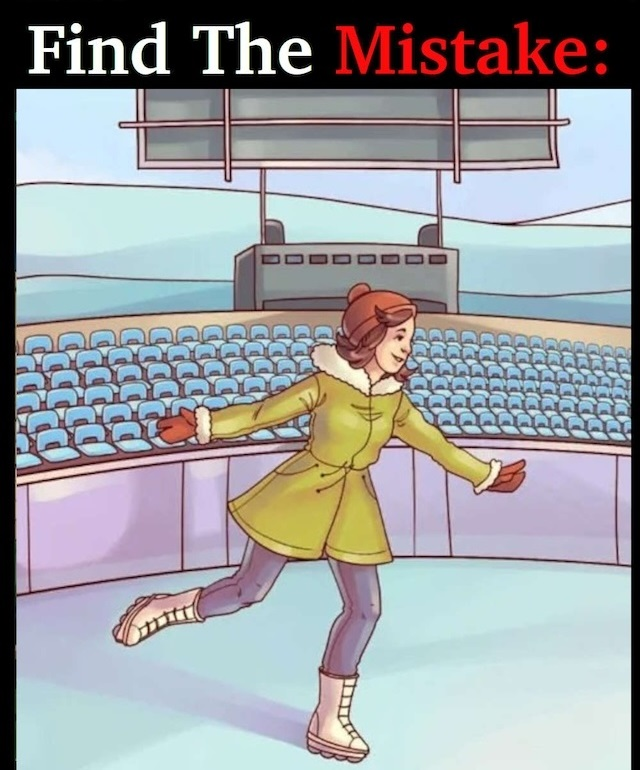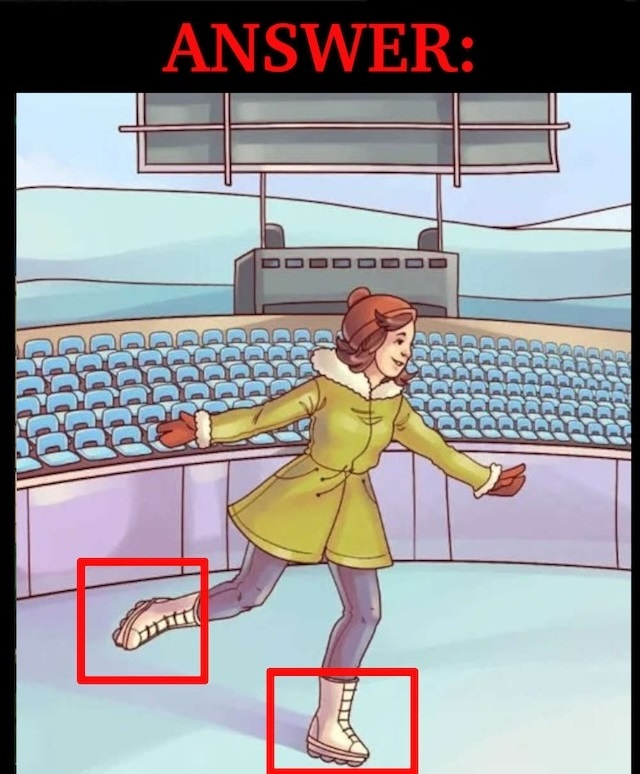Can You Spot the Tiny Mistake in This Ice Skating Scene? Look Closer, It’s Actually a Big One!
At first glance, everything looks perfect. A girl glides effortlessly across a crisp ice rink, arms gracefully outstretched, her motion frozen in a seemingly flawless scene. But something’s off. And it’s not what you think. The question is—can you spot it?
This visual riddle is designed to test more than just your eyesight. It’s about attention to detail, thinking outside the box, and resisting the urge to settle for the obvious. Ready for the challenge? Let’s break it down.

Why This Puzzle Stumps So Many People
The trick with puzzles like these is they prey on our assumptions. Our brains are wired to fill in gaps, to accept that certain things should be there, even if they’re not. So, when we see a girl on a rink, we automatically assume everything checks out — the skates, the ice, the movement.
Most people glance quickly and focus on the big stuff — posture, background, body alignment. But the real clue is hiding in plain sight, and it’s much smaller than you’d think.
Let’s zoom in and slow down. Forget the background noise — ignore the graceful arms, the flow of the hair, even the sparkle of the ice. Focus on her feet. Specifically, what she’s wearing on her feet.
Take a close look at her boots. At a glance, they seem fine, right? Laced up, sturdy. But there’s one detail that gives it all away…
The Key Detail: Look at the Bottom of Her Shoes

Here’s the twist: the skater isn’t wearing ice skates at all.
If you look closely, you’ll see small wheels attached to the soles — she’s wearing roller skates, not ice skates. And that’s the hidden mistake. On a frozen rink, roller skates make zero sense. Ice skaters wear bladed skates that glide across the ice. Wheels would never work on this surface — it’s like trying to ride a bike on a frozen pond.
It’s a tiny detail, but it flips the whole image upside down. Suddenly, what looked graceful becomes illogical. It’s the visual equivalent of a record scratch.
Why This Mistake Is So Easy to Miss
It comes down to focus and framing. We’re conditioned to see the “whole picture,” not the microscopic details. Our brains scan for facial expressions, body language, and general context — and if everything seems right, we move on.
That’s exactly what makes this riddle effective. The scene feels natural, so we don’t question it. It takes a second, more intentional look to notice the wheels, to realize what’s really going on. It’s a subtle reminder that even the most convincing pictures can hide flaws — if you’re not paying attention.


